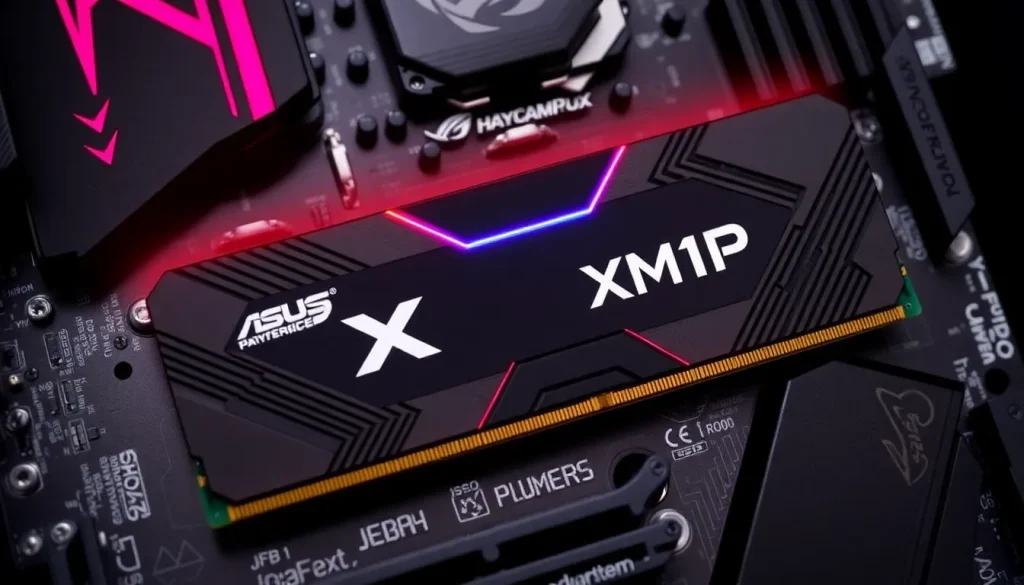ASUS uses XMP 1 to validate RAM compatibility for ROG Z890 motherboards

Overclocking RAM can be a daunting task for many users, especially when it comes to ensuring compatibility with motherboards. Understanding how manufacturers validate RAM compatibility is crucial for building a high-performance PC. Recently, ASUS has shed light on its validation processes, particularly regarding its ROG Z890 motherboards. In this article, we'll delve into the details of ASUS's use of XMP 1 for RAM validation and what it means for users.
ASUS's confirmation about validating RAM using XMP 1 is significant. It clarifies a point that many enthusiasts have long suspected: that the compatibility lists provided by manufacturers contain nuances worth noting. It’s not just about whether a particular memory kit will work; it’s about how it performs under specific conditions, which can vary widely.
Understanding ASUS's RAM compatibility validation using XMP 1
At first glance, the Qualified Vendor List (QVL) from ASUS might seem like a straightforward catalog of compatible memory modules. However, it serves a much deeper purpose. It is essentially a technical roadmap for maximizing the performance of DDR5 RAM on platforms such as Intel Z890.
In the QVL, you will find more than just the model numbers of tested RAM. The list includes:
- Certified frequency
- Primary latencies
- Memory capacity
- Package type
- Single or dual-sided modules
- Voltage specifications
- Slot configurations tested (one, two, or four DIMMs)
This information is essential for users looking to build a stable system, as it provides insights into the operating conditions under which the memory has been verified.
ASUS's validation process employs XMP 1, which is the basic profile that sets the speed and four primary parameters (frequency, CL, tRCD, tRP, tRAS). Notably, ASUS does not validate memory using XMP 2 or XMP 3, which means the official stability guarantees are based on standard conditions that may not reflect the full capabilities of the RAM.
The implications of using XMP 2 and XMP 3
When discussing XMP profiles, it's crucial to understand the differences among them. While XMP 1 provides a reliable baseline, XMP 2 contains comprehensive parameters that highlight the full capabilities of DDR5 modules. This profile allows for:
- Access to all manufacturer-defined parameters
- Higher performance potential
- Increased voltage requirements for stability
However, because ASUS does not include XMP 2 in its official validation, users must manually test these profiles. This can lead to potential instability if the memory modules are not perfectly compatible with the motherboard's memory controller (IMC).
Furthermore, XMP 3 and ASUS's AEMP (ASUS Enhanced Memory Profile) take things a step further by applying aggressive timings for even better performance. However, the downside is clear: there is no guarantee of stability across all motherboards.
Evaluating the risks of relying on QVLs
While the QVL serves as a valuable resource, it is essential to approach it with caution. The fact that ASUS has validated memory only under XMP 1 means that:
- Users looking to utilize XMP 2, XMP 3, or AEMP might face stability issues.
- Manual adjustments may be necessary to achieve optimal performance.
- Other motherboard manufacturers might adopt similar validation practices, which could lead to wider compatibility issues in the market.
This raises the question: will other manufacturers follow ASUS's lead and validate fewer memory models? The potential loss of sales and customer dissatisfaction could drive them to avoid such limitations.
How to check the RAM QVL for your ASUS motherboard
Finding the RAM QVL for your specific ASUS motherboard can help you make informed decisions. Here’s how you can do it:
- Visit the official ASUS support website.
- Select your motherboard model from the dropdown menu.
- Navigate to the "Support" section.
- Locate the "Memory/CPU Support" tab.
- Download the QVL document for the latest information on compatible RAM models.
How to enable RAM XMP on ASUS motherboards
Configuring XMP on your ASUS motherboard is straightforward. Follow these steps to enable it:
- Enter the BIOS setup by pressing the Delete key during boot.
- Go to the AI Tweaker section.
- Find the XMP setting and select your desired profile (XMP 1, XMP 2, etc.).
- Save and exit the BIOS.
If you're looking for a visual guide, check out this informative video:
In summary, ASUS's utilization of XMP 1 for RAM validation is a crucial point for users looking to maximize their system's performance. Understanding the limitations of the QVL and the implications of using different XMP profiles can help users make more informed decisions when selecting RAM for their builds. As the landscape of RAM and motherboard compatibility continues to evolve, staying informed will enable users to achieve the best possible performance from their systems.




Leave a Reply